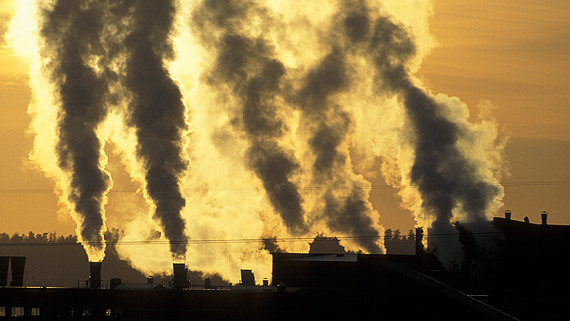Towards Paris: Climate scenarios provide information about what is to come
 Kuva: Kuvaliiteri / Asko Hämäläinen
Kuva: Kuvaliiteri / Asko HämäläinenIf greenhouse gas emissions continue at the current level, the Earth's climate will warm by about four degrees by the end of this century.
The temperatures in Finland may rise by as much as eight degrees. This information is revealed by the climate scenarios drawn up by the International Panel on Climate Change. Climate scenarios are an important tool in international decision-making since they provide researched information about what is to come.
Climate scenarios constructed by the International Climate Panel IPCC are used to estimate possible future development of greenhouse gas concentrations. There are four different so called RCP scenarios (Representative Concentration Pathways).
"The construction of these scenarios requires extensive research data from different fields of society. The Finnish Meteorological Institute also participates in this work. In addition, we produce tailored scenarios for Finland on the basis of IPCC's global climate scenarios," explains Professor Ari Laaksonen from the Finnish Meteorological Institute.
Remaining within two degrees requires urgent measures
Changes caused by climate change remain smaller in a scenario in which mitigation of greenhouse gas emissions turns global emissions to a clear decline as soon as after year 2020 and they reach zero level by the end of the century (RCP2.6).
"The most optimistic scenario RCP2.6 is the only scenario in which warming remains within the international target of two degrees. Realisation of this scenario would require rapid measures to reduce emissions by all countries," states Laaksonen.
At the moment we are on the path to the worst-case future scenario
Climate scenario RCP8.5 describes a situation in which greenhouse gas emissions continue at the current level. At the end of the century the carbon dioxide concentration in the atmosphere would be threefold compared with the pre-industrial era and the Earth would warm by 3.7 degrees. "This could mean a rise of even eight degrees in the temperature in Finland", Ari Laaksonen explains.
It is believed that the change will have a detrimental overall effect on all areas. Especially the direct disadvantages will focus on poor areas and development countries. Winters in Finland will continue to become milder and new animal and plant species will claim new living space. Climate warming is also linked to the increase in other extreme phenomena such as storms and floods.
"If we manage to restrict emissions, the climate will also change less," states Ari Laaksonen.
Research supports decision making
Not all effects of stronger warming are known and predicting them is difficult. The uncontrollability alone is a great risk. More research is therefore needed.
"We are already very familiar with how carbon dioxide behaves but for example the impact of ozone and small particles in the atmosphere is still unclear. These are some of the things we study at the Finnish Meteorological Institute to be able to prepare for the future better," explains Ari Laaksonen.
"Climate scenarios and impartial research data serve as the starting point for research and support it," Ari Laaksonen says.
Watch a video on the subject: https://youtu.be/5smxBJLh (in Finnish)
Further information:
Professor Ari Laaksonen, Finnish Meteorological Institute, tel. +358 29 5395530, ari.laaksonen@fmi.fi
Researched information about climate change: www.glimate-guide.fi
Klimaatti – an online magazine on climate change (in Finnish) http://www.klimaatti.fi/